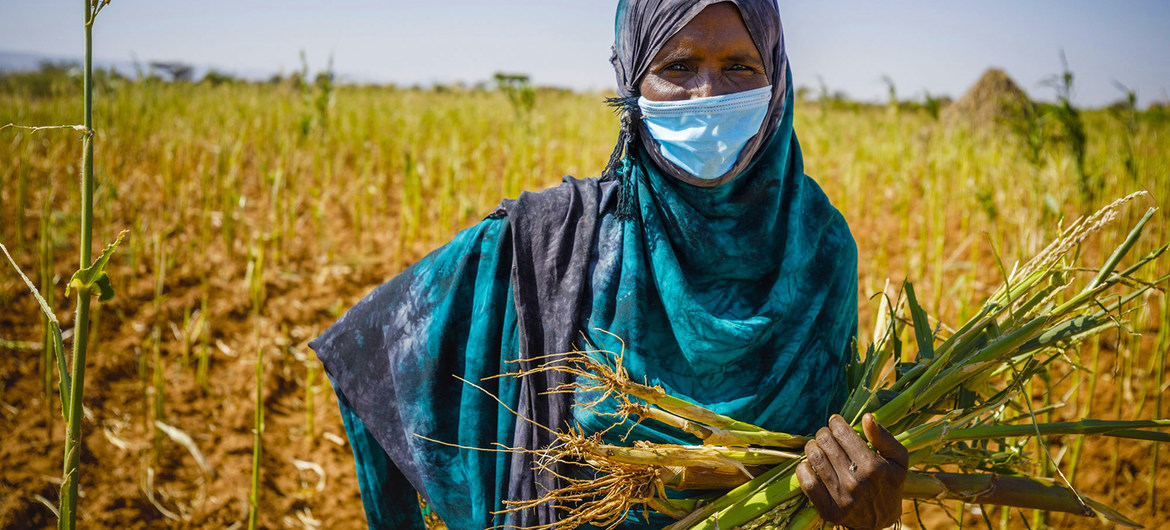Major fall in global food prices for July but future supply worries remain
UN News – Food prices dropped significantly in July, marking the fourth consecutive monthly decline since hitting record highs earlier in the year in the wake of the war in Ukraine, the Food and Agricultural Organization (FAO) reported.
The UN agency has published its latest eagerly-awaited Food Price Index, the barometer that tracks monthly changes in the international prices of five food commodities: cereals, vegetable oils, dairy products, meat, and sugar.
The index averaged 140.9 points in July, or 8.6 points down from June. The decline was led by double-digit percentage drops in the cost of vegetable oils but also cereals, with the recent UN-brokered deal on Ukrainian grain exports a contributing factor.
Welcome but wary
“The decline in food commodity prices from very high levels is welcome, especially from a food access viewpoint,” said Maximo Torero, FAO Chief Economist.
“However, many uncertainties remain, including high fertilizer prices that can impact future production prospects and farmers’ livelihoods, a bleak global economic outlook, and currency movements, all of which pose serious strains for global food security.”
In July, FAO’s Vegetable Price Index decreased by 19.2 per cent compared to June, marking a 10-month low. International quotations for all oil types fell, the agency said, with palm oil prices declining due to prospects of ample export availability out of Indonesia, for example.
Additionally, sunflower oil prices dropped markedly amid subdued global import demand, despite continued logistical uncertainties in the Black Sea region. Vegetable oil values were also pushed down by lower crude oil prices.
Black Sea export deal
The Cereal Price Index also reflected an 11.5 per cent decline last month, though the remaining 16.6 per cent above July 2021. Prices of all cereals in the index declined, led by wheat.
World wheat prices dropped by as much as 14.5 per cent, FAO said, partly in reaction to the Russia-Ukraine deal on grain exports from key Black Sea ports, and also because of seasonal availability from ongoing harvests in the northern hemisphere.
July also saw an 11.2 per cent decline in coarse grain prices. Maize was down 10.7 per cent, again due in part to the Black Sea Grain Initiative and increased seasonal availabilities in Argentina and Brazil. Additionally, international rice prices also declined for the first time this year.
Sweet news
The Sugar Price Index fell by nearly four per cent, amid concerns over demand prospects due to expectations of a further global economic slowdown, a weakening in Brazil’s currency, the real, and lower ethanol prices resulting in greater sugar production there than previously expected.
The downward trend was also influenced by indications of greater exports and favourable production prospects in India. Meanwhile, the hot and dry weather in European Union countries also sparked concerns over sugar beet yields and prevented sharper declines.
FAO further reported that the Dairy Price Index decreased 2.5 per cent “amid lacklustre trading activity”, yet still averaged 25.4 per cent above last July.
While the prices of milk powders and butter declined, cheese prices remained stable, boosted by demand in European tourism destinations.
Mixed picture for meat
Meat prices also continued the downward trend, dropping by half a per cent from June due to weakening import demands. However, poultry prices reached an all-time high, boosted by firm import demand and tight supplies due to Avian influenza outbreaks in the northern hemisphere.
The FAO Meat Price Index was also down in July, by 0.5 per cent from June, due to weakening import demand for bovine, ovine and pig meats. By contrast, international poultry meat prices reached an all-time high, underpinned by firm global import demand and tight supplies due to Avian influenza outbreaks in the northern hemisphere.



